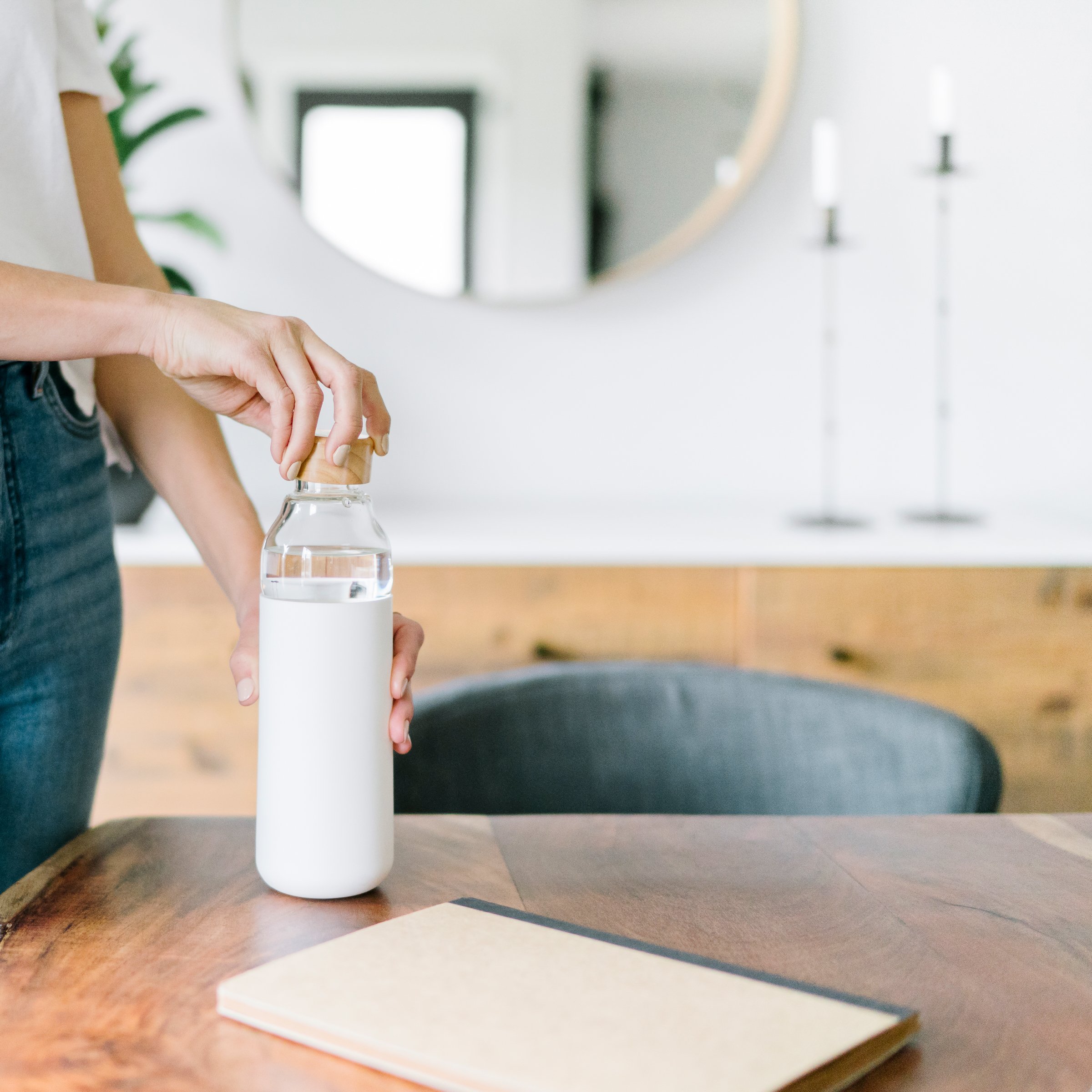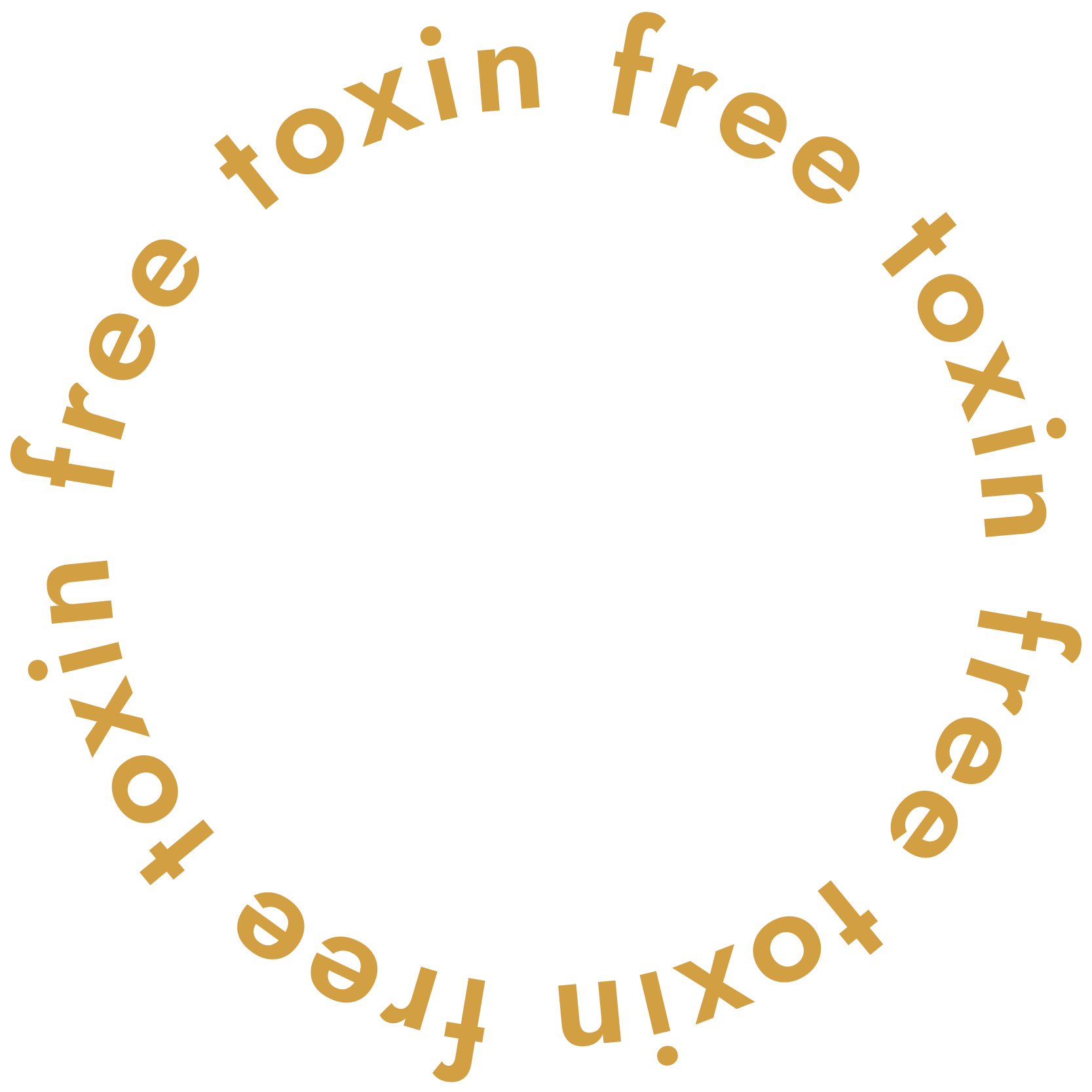I always tend to get a rise out of people when I call the Safe Drinking Water Act the “Not-So Safe” Drinking Water Act. The fact is that the water you are drinking isn’t as regulated as you think it is. This is how you actually filter drinking water.
IS YOUR TAP WATER SAFE?
Hydration is one of the building blocks of good health. But, if you are consuming tap or even bottled water, it’s likely you are also consuming toxins that aren’t doing your health any favors. Filtering your drinking water is critical to your health. Let’s break down what’s lurking in your drinking water, what your filter options are and how to determine which one is the right water filter for your home.
THE SAFE DRINKING WATER ACT
In 1974, the Safe Drinking Water Act (SDWA) was passed with the intention of ensuring that everyone, regardless of poverty level, has the right to drink non contaminated water. In 1996, large portions of the SDWA were amended, requiring the EPA to pass maximum contaminant levels (MCLs) for certain contaminants. There are tens of thousands of contaminants in our water and the EPA only regulates 88 of them and when they do regulate them, it doesn’t necessarily mean those levels still don’t come with health risks.
Let’s use arsenic as an example. Arsenic is a naturally occurring heavy metal but can also be man made. Arsenic is known to causes cancer of the bladder and brain as well as birth defects. Back in 1996 , the EPA gave arsenic an MCL of 50 parts per billion (ppb). They rationalized that at that level, it would cause cancer in 1 in a hundred people drinking it, but that further filtration wasn’t cost effective. As you can see, MCLs do not mean that drinking it won’t harm your health, it just means that that level is what was negotiated and is the most cost effective solution. Since the 90s, new data has emerged on the health effects of arsenic. Based on that new data, the EPA lowered the MCL to 10 ppb, which would take the cancer rise from 1 in a 100 to 1 in 300.
In other words… there are still risks and it would be too expensive to make it safer to drink. Passing regulation is not about what the safest levels are, its balancing the interests of the chemical companies, water suppliers, municipalities and health advocates. It’s not all about you, the consumer, even thought it should be. I can tell you from experience that the people that don’t show up at these regulatory hearings are the public; the very people drinking the water and impacted the most.
WHAT IS PFAS – THE FOREVER CHEMICAL
What are PFAS chemicals? PFAS has been named the forever chemical because it’s so hard to destroy or filter. PFOS/PFOA are a subcategory of PFAS and were originally made popular with Teflon pans because it’s the chemical that makes things non stick and waterproof. It was the wonder chemical with its ability to put out fires when added to firefighting foam and make anything water proof. These chemicals were used to make products to repel water and resist stains and grease, to make carpet, fabric, clothing, food packaging, pots and pans, and personal care products. For 55 years, this chemical has been used worldwide and has contaminated every water system in the US. What makes it so remarkable is it’s durability and that is also what makes it scary. It cannot be destroyed. Many companies have stopped using PFOA and PFOS, but there are 4,700 different PFAS on the market that have no safety testing, we don’t know what the health effects are and we have no idea how much is in our water. It’s just this big “we have no idea.” If you haven’t seen the movie Dark Waters, you should go check it out. It’s the Erin Brockovich movie for PFOS/PFOA contamination.
The latest studies indicate that exposure to PFOA and PFOS over certain levels may result in adverse health effects, including developmental effects to fetuses during pregnancy or to breastfed infants (e.g., low birth weight, accelerated puberty, skeletal variations), cancer, liver effects , immunity issues, thyroid issues, among others. The EPA and many states are currently in the process of reacting and trying to pass laws and regulations that would set MCLs for PFOS and PFOA. Currently, there is zero regulation on the amount of any PFAS in your drinking water.
WHAT ABOUT FLUORIDE?
I have a lot to say about fluoride. I absolutely suggest you filter fluoride out of your water. What you may be surprised to hear is that fluoride was used to treat hyperthyroidism up until the 1950’s, prior to the development of other thyroid-suppressing medications. A dose of 2-5 mg of fluoride per day was typically found to be effective for suppressing an overactive thyroid. If you live in the typical fluoridated community, chances are you are inadvertently taking in enough fluoride to suppress your thyroid. Most adults in these communities are ingesting between 1.6 and 6.6 mg of fluoride per day.
THE BOTTLED WATER DILEMMA
Bottled water is not just completely unregulated, the plastic bottles are highly problematic on their own. In a recent study by German researchers, nearly 25,000 chemicals were found lurking in a single bottle of water. The researchers uncovered surprising data that most of the bottled waters revealed chemicals that interfered with both kinds of hormone receptors; consuming as little as 0.1 of an ounce inhibited estrogenic activity by 60% and androgenic activity by 90%.
Plastic bottle waste is also a recognized environmental disaster. Numerous studies have shown that most water in plastic bottles contain microparticles of plastic, which aren’t just harmful for your health, they are disastrous to the environment. Many of these chemicals are endocrine disruptors and can be a serious threat, especially for pregnant women, who pass them on to their children.
On top of that, it is interesting to know that 25% of the bottled water you buy in a shop is nothing more but glorified tap water. With a little extra filtration and some carbon dioxide for the sparkling effect, the bottled version is sold to you at a higher price, but it still is coming from the same source.
HOW TO CHECK YOUR WATER
The first thing you can do is check what is actually in your tap water at the Environmental Working Group’s Tap Water Database. Not only does it show you what contaminants are in your tap water, it also provides you with the comparison between the legal limit of the contaminant and the health risks associated with particular levels. This is my favorite resource.
Depending on where you live it might be a good idea to have your water tested. I use TAPSCORE and suggest them to everyone who wants to test your water before deciding what filter to buy. They won’t just give you a lab report, they will also give you a health analysis, explanation of all the contaminants found and what the health impacts could be. They can test city water or well water and have kits as low as $139. It’s well worth it and an investment in your health.
FILTER Drinking Water OPTIONS
CARBON FILTERS
There are several types of carbon filters: Granulated Activated Carbon, Block Carbon and Coconut Shell Carbon Filters. Carbon filters are the most popular and what you see in basic pitchers. They mainly remove chlorine, chemicals, gases, and physical impurities like sediments, which make your water taste better. It is beneficial but it doesn’t take out fluoride, copper, nitrates, arsenic, microbes, heavy metals, etc. It’s better than nothing and beneficial for whole house systems where you want the chlorine removed from your showers. Chlorine will dry out your skin, ruin your laundry and damage your hair, especially colored hair.
KDF 55 & 85
KDF stands for Kinetic Degradation Fluxion and is a filter medium that is a copper-zinc alloy that reduces contaminants such as chlorine, bacteria and some heavy metals using a chemical process called redox, or oxidation-reduction. It’s as step between a carbon filter and reverse osmosis.
REVERSE OSMOSIS
A reverse osmosis filter involves the application of pressure on one side of the solution where a membrane is placed in between the solutions. This membrane is used to filter out contaminants down to the smallest particles. It will filter through 98% of what is in your water. The down side is that it also takes all the minerals out.. calcium, magnesium, potassium, iron, zinc. Your body really needs those minerals. So you want an RO system that has a remineralization filter or you need to add trace minerals back in to your water prior to drinking it.
GRAVITY FILTERS
Gravity filters for water use the force of gravity to remove contaminants from water, without relying on plumbing or electricity to function. When the top reservoir is filled, the weight of the water feeds the liquid through the filters, into a tank beneath the filtration system. These filters get most of the contaminants out, but most don’t filter fluoride. It takes up space on your counter and takes time to filter the water, but it has the upside of not requiring a plumber or installation.
MY RECOMMENDATIONS
Having either an RO system or gravity filter that removes fluoride for drinking water should be your first health priority. If you are able, a whole house filtration system that uses a carbon filter at a minimum (an added KDF filter is preferable) would greatly improve your water quality, even in your showers, where you can absorb toxins through your skin.
In my home, we have an Aquasure Whole House carbon filter with water softener and an under sink Clearly Filtered Under Sink Filter If you don’t want to install anything under your sink, you can get a ProOne ($230) Gravity Filter. If you have health issues that you dealing with and want to drink the cleanest water possible, Live Pristine’s Water Revival System ($1995) is an under sink RO + and the purest water you can drink, with all the minerals intact and structured like you would find water in nature. AquaOx ($3900) makes the highest quality whole house filter available with a 10 Step Filtration system, including multiple carbon and KDF Filters and comes with a 20 Year Warranty. Water pitchers are mostly worthless, but the Clearly Filtered Pitcher produces high quality drinking water for only $75.
THE WRAP UP
Now that you know what is lurking in your water, what it can do to your health AND what you can do about it, are you ready to go purchase that water filter? I hope so.
READY TO FILTER YOUR WATER?
Dive Deeper with Wendy’s Toxin-Free Resources
Ready to dive deeper into your wellness journey? Whether you are at the very beginning or a seasoned toxin-free pro, I have resources that will meet you where you are.
- Join my insider email list to be the first to learn about new healthy living resources, blog posts, exclusive offerings, and discounts.
- Subscribe to the podcast for weekly episodes on living toxin-free.
- In the Toxin-Free Shopping Guide, you can find truly toxin-free products with ingredients you can trust—fully vetted by me and the very same brands that I bring into my home. Check out everything from my skincare, haircare, water filters, protein powders, electrolytes, and so much more!!
- Download this free guide on my top 25 toxins to avoid and how to spot them on labels.
- Get a deep-dive education on how toxins impact your health with Toxin Free in 3. When you become a student, you can access the full course, my private community, discounted 1:1 sessions, and live monthly Q&As with me!


+ show Comments
- Hide Comments